
DOS
Betamax's
DOS PUBLICATIONS
GENERAL TOPICS
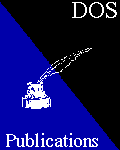
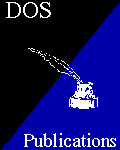
|
|
Doctor DOS Betamax's |
DOS PUBLICATIONS
|
These books contain general DOS information on a variety
of topics. They include DOS installation, setup, tweaking
and tutorials for the newbie, but also intermediate and
advanced information for more experienced users.
A number of the books are specific to one manufacturer and
version of DOS, while others span various versions.
INFORMATION AND IMAGES BELOW MAY NOT BE
REPRODUCED WITHOUT PERMISSION FROM THE AUTHOR ©

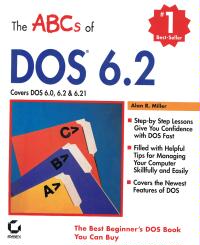 |
ABCs of DOS 6.2 1993 by Alan Miller ISBN: 0-7821-1234-X A series that began in 1987 with ABC's of PC-DOS this is the one released for DOS version 6.2. A good book for beginners, its comprehensive writing details every point required to set up and run a DOS computer system. In particular are chapters on DOS SHELL and EDIT. Two chapters detail recovery tips in the event of hard drive crashes with step-by-step directions for using FDISK to partition the drive. |

 |
The Best Book of DOS 1989 by Alan Simpson ISBN: 0-672-22680-4 A suitable starter book for the newbie and beyond, Alan has written an all-encompassing manuscript that starts with the basics and then moves through drive & file management, simple DOS programming, and on to advanced tricks. Each DOS command is described along with its command-line switches; plus syntax and examples are provided. |

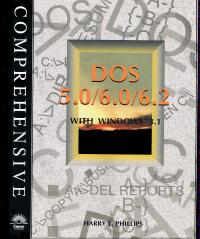 |
Comprehensive DOS 5.0/6.0/6.2 with Windows 3.1 1994 by Various Authors ISBN: 1-56527-150-5 Here is a tutorial book from Course technology. Despite the word "Windows" in the title, it spends most of its time teaching DOS usage. An excellent beginner book, each aspect of DOS and the computers on which it runs are spelled out in an easy-to-understand manner. Assignments at the end of each chapter survey what was taught and issue tasks to complete based on that. A recommended publication. |

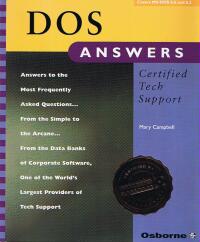 |
DOS Answers 1994 by Mary Campbell ISBN: 0-07-882030-8 Mainly for newbie and intermediate users, this is laid out by category and then in a question & answer format. Deep detail is not explored, but instead are given direct answers to common, and even less-common questions. |
|
DOS 5: A to Z 1992 by Gary Masters ISBN: 0-89588-805-X Here is an excellent Sybex book that covers all the DOS 5 commands in alphabetical order, but with good depth on memory management, DOSKEY, the DOS Shell, EDIT and other topics. A keyboard template is included. In addition, what makes this book worth the money is the over-600 error message directory. Also in alphabetical order, even the most obscure error messages can be found here along with good explanations. A recommended book for this alone. |
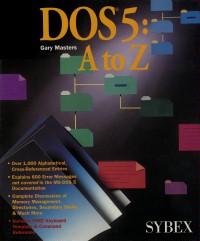
|
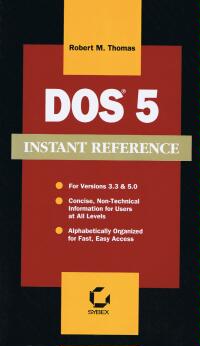 |
DOS 5 Instant Reference 1991 by Robert Thomas ISBN: 0-89522-804-1 A reference book for those that know a bit about DOS but need just those one or two extra bits of information to complete a task. General DOS rules are covered. Then there are alphabetical lists of DOS and CONFIG.sys commands, and one of Device Drivers, along with explanations of each. Two short chapters discuss DOS SHELL and batch files. The book ends with an Error Message guide. An updated (1993) version is available that covers DOS 6. |
|
DOS 5 Techniques and Utilities 1992 by Jeff Prosise ISBN: 1-56276-007-6 From PC Magazine, this covers the basics of DOS 5, plus the DOS SHELL, QBasic, and memory management, then goes on to discuss the 50 utilities provided on the accompanying discs. These include file managers and searchers, a phone dialer, printer capability expanders, and a batch file compiler. |
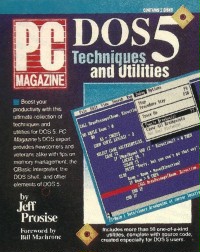 |
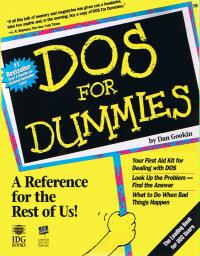 DOS for Dummies has several updates and sister books including DOS for Dummies, 2nd Edition (1993), an MS-DOS 6.2 Upgrade with software (1993), More DOS for Dummies (1994), one for DOS with Windows 95: ...Windows 95 Edition (1996), yet a third edition (1998) of the one shown here, plus the Command and Quick Reference books listed next. |
DOS for Dummies 1991 by Dan Gookin ISBN: 1-878058-25-8 This perennial favourite for beginners lays out the basics in an easy manner with little techno talk. A removable, card-stock "cheat sheet" inside the front cover allows fast access to the most common DOS commands and procedures. Each chapter begins with a "how-to" list of points showing what will be covered. This allows quick perusal when trying to find basics on a particular subject. An extensive index rounds out the reference value of this book. My only complaints regard Dan's manner of putting some things down, and his tendency to scare users away from some powerful DOS commands. He does that by saying they are dangerous so one should avoid using them. A better method would be to describe why they are dangerous, and how to use them constructively and with safety. Still, this is a good start for any DOS newbie. |
|
DOS for Dummies Command Reference 1993 by Greg Harvey ISBN: 0-878058-91-6 This is a small booklet that lists DOS commands alphabetically. Two more sections do the same for Batch and Configuration commands. It's not particularly recommended for your DOS library. In part that is because the information is already available in most other DOS books, although it is in a summary form here. The main reason though, is that the author doesn't nurture the reader enough and actually projects a disdain for DOS. The usage of "thumbs-down" and "skull & crossbones" symbols don't help. It's particularly annoying when the reader is advised to have someone else run some of the commands instead of taking the extra time to give more detail as to how to use them in safe and competent ways. |
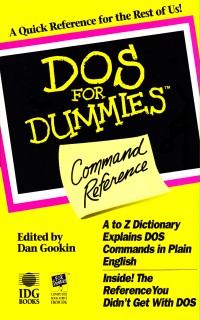 |
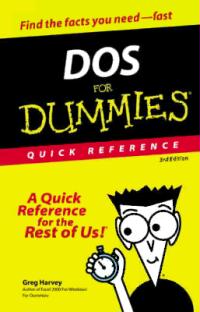 |
DOS for Dummies Quick Reference 1998 by Greg Harvey ISBN: 0-76450-368-5 Here is a book to be kept by the computer. Presented in alphabetical order with a spiral, lie-flat binding for easy reading while typing, it covers the basics on files, directories and disk drives. Each DOS command is addressed with step-by-step instructions for doing the most common, and less common, tasks in DOS. A Techno Talk glossary rounds out this handy book. |
|
DOS Power Tools 1988 by Paul Somerson ISBN: 0-553-34526-5 An excellent book that gives a great deal of information on DOS development, how it works, and its implementation. There are also sections on batch techniques and DOS command tips, plus a wealth of utilities on the accompanying disc that are still very useful to the DOS afficiando. |
 |
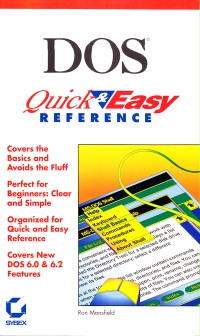 |
DOS Quick & Easy Reference 1994 by Ron Mansfield ISBN: 0-7821-1379-6 A fast reference for the newbie that has his feet wet, but not yet confident with all the commands and syntax. The inside covers list tasks, their associated commands and the pages with the explanations. Inside, each command is in alphabetical order with a discussion and examples. Additional chapters discuss batch files and the DOS Shell, and there is a short "Time-Savers" section. |
|
DOS 6.2 Instant Reference 1994 by Robert Thomas ISBN: 0-7821-1445-8 Suitable for beginners or those that use DOS only occasionally, this covers in short form the essentials of DOS and its commands. Additional chapters discuss DOS SHELL, batch files and DOS device drivers. A fast-to-access "cheat sheet" inside the front and back covers gives one-line suggestions as to what commands to use for the given tasks. |
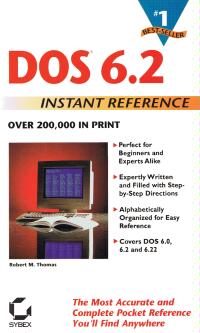 |
 |
DOS: The Complete Reference 1991 by Kris Jamsa ISBN: 9780078819049 Kris Jamsa has written many books on the subject of DOS. This one is a great beginner book with 46 chapters that discuss DOS files, wildcard characters, disc navigating, terms, commands, and basic copy operations. There is also an alphabetised command reference. |
|
DOS: The Pocket Reference 1991 by Kris Jamsa ISBN: 0-07-881720-X (Second Edition) A small-format publication, it covers up to MS-DOS 5. Each command is spelled out with syntax and examples, plus associated error messages and notes. The binding is made to lie flat to keep the relevant page open for the DOS student. |
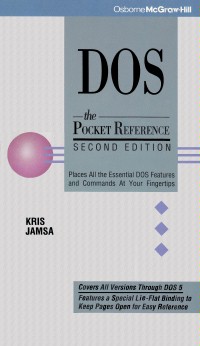 |
 |
DR-DOS 6 by Example 1991 by William Lawrence ISBN: 1-55851-245-4 DR-DOS (Dee-are-Doss) is a competitor to MS-DOS. In fact, Microsoft often had to play catch-up with it, which is illustrated through the advances provided by DR-DOS as shown in this book. It took Microsoft another two years to include in its version some of what DR-DOS already possessed by that time. DR-DOS 6 by Example begins with a tutorial on setting up the operating system and tuning your system. Then the book goes on to describe the progressive GUI interface, the task switcher and disc compression utilities, among other features. A complete reference is provided to DR-DOS commands which, by the way, are the same as MS-DOS commands save for the advances and additions. |
|
Dr. File Finder's Guide to Shareware 1990 by Mike Callahan and Nick Anis ISBN: 0-07-881646-76 A wonderful, detailed guide to shareware and freeware is presented in this book. It is well organised into categories, but also includes tips, information on DOS, troubleshooting modems and hard drives, and personal observances based on extensive experience. The included disc has many popular software programs. A recommended publication! For those finding this book without its disc, many of the programs may be located through Internet searches. |
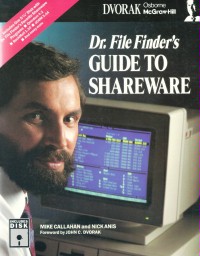 |

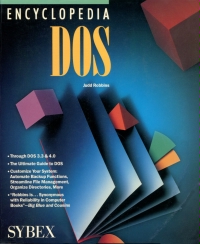 |
Encyclopedia DOS 1990 by Judd Robbins ISBN: 978-0895886996 DOS Versions 3.3 through 4.0 are covered by this book. The author goes through the basics and then discusses organising and customising a DOS system. |
|
Expert Advisor 1989 by Jonathan Kamin ISBN: 0-201-51743-4 Here is an alphabetical-format book that references every PC and MS DOS command from Version 2 through 4.0, plus some error messages and other topics are included. Examples of the latter are batch files, disc information, ports and redirection. As such, it is a good book for the beginner and for anyone that needs specific information on DOS topics that are more in depth than the "quick reference" style of books listed elsewhere here. Speaking of that, an actual, separate Quick Reference booklet is included with Expert Advisor to cover that angle, too! |
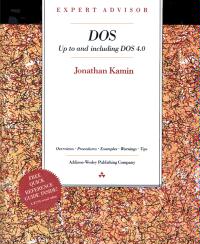 |
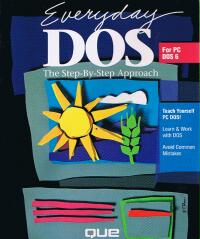 |
Everyday DOS 1993 by Various Authors ISBN: 1-56529-363-0 A Que book, this is geared toward PC-DOS users. (PC-DOS is IBM's version and it is compatible with MS-DOS save for some minor differences.) A beginner publication, it gets the newbie's feet wet with information on computers in general and then discusses the basics of DOS. Included is an entire chapter on the `E' text editor plus a complete reference to PC-DOS commands. |

 |
Field Guide to MS-DOS 6.2 1994 by ? ISBN: 1-55615-560-3 A Microsoft Press book, this works best as a companion to the 6.2 Manual. It starts with some basics then details each DOS command in alphabetical order along with other terms. A short troubleshooting section follows. The most useful section comes at the end where every menu item, icon and tool bar seen in the MS-DOS operating system is presented. This book is well illustrated with screen shots and other visual aids. |
|
The First Book of MS-DOS 5 1991 by Jack Nimersheim ISBN: 0-672-27641-1 This is good book for beginner and intermediate DOS users. It is mainly included here because of several chapters on DOS SHELL. For those using this GUI interface, the Shell is described and how to use it is gone into in depth. Later, advanced Shell procedures and Shell programming tools are discussed. Also included in this book are chapters on DOS basics and on batch files. |
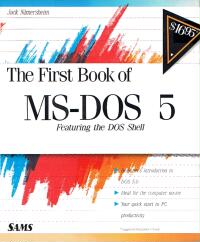 |

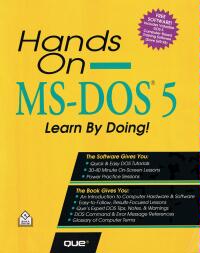
|
Hands On MS-DOS 5 1992 by J.D. Watson ISBN: 0-88022-683-8 A tutorial book that comes with a training disc to assist beginners in learning DOS. Computer basics give way to DOS basics and then move on to discussing how to use the included disc tutor. An extensive set of chapters deal with DOS SHELL that embrace the basics and customising techniques, plus working with programs via the Shell. The book finishes up with an extensive Command Summary, glossary and Error Message guide. |

 |
Inside Novell DOS 7 1993 by Minasi ISBN: 1-56205-202-0 Novell DOS was the successor to DR-DOS (Dee-are-Doss), which has since reverted back to the "DR DOS" name. New features were added for Novell's DOS 7 which included Networking, DPMI (DOS Protected Mode Interface), Multitasking, and enhanced security. (No further details.) |

 |
Learn at First Sight MS-DOS 5.0 1991? by ? ISBN: 0-13-000044-2 One of maranGraphics "cutesy" books with lots of bright images and smiling floppy disc characters. Suitable for beginners, it outlines the basic procedures of MS-DOS 5 in a simple-to-understand format. Includes DOS SHELL. (No further information.) |
|
Learn at First Sight MS-DOS 6.0 1993 by ? ISBN: 0-13-064650-4 Another in the maranGraphics series, this outlines the basic procedures of MS-DOS 6. (No further information.) |
 |
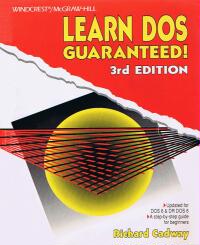 |
Learn DOS Guaranteed! 1993 by Richard Cadway ISBN: 0-8306-4331-1 (Third Edition) This is directed toward beginners and intermediate users of both MS and DR-DOS (Dee-are-Doss). There are 30 chapters written in a simple-to-understand style. Two more sections, one about loading DOS and another listing commands with short explanations that were not generally discussed earlier, round out this book. |
|
Learning and Running DOS 5 1991 by Van Wolverton ISBN: 1-55615-430-5 A detailed book for DOS 5 users, author Wolverton writes in a simple-to-understand method for beginners, but also discusses internediate-level topics. These include basic computer skills, what DOS is, installing it, startup procedures and files, and disc and file management. The DOS Shell is covered, but so is an extensive tutorial on batch files and another on DOSKEY. Advanced techniques cover tailoring the system, memory management, making and using a RAM drive, drive-letter interpretation, and lesser known DOS, but useful commands. Also included are a glossary and command reference. A recommended book, as is just about anything written by Van Wolverton. Two tutorial discs are included. |
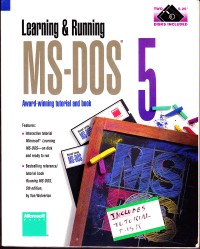 |
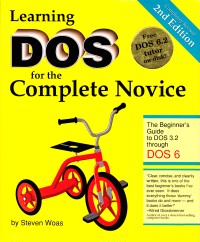
|
Learning DOS for the Complete Novice 1993 by Steven Woas ISBN: 0-9623898-9-7 (Second Edition) A good starter book, this covers MS-DOS versions 3.2 through 6. It discusses DOS and the computer, then goes on to give a tutorial on the basics of screen, file and hard drive management. A section focuses on MS-DOS 6 features, and then there are references for DOS commands, error messages, abbreviations, file extensions, and a glossary. Plus, there are recommended books and software. A bonus is an MS-DOS 6.2 tutorial disc. |

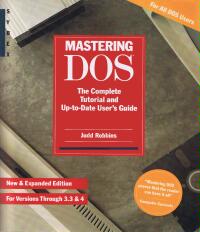 |
Mastering DOS 1988 by Judd Robbins ISBN: 1-89588-555-7 (Second Edition) Although an older book, nonetheless, it is an excellent one for the DOS novice and intermediate user. After the fundamentals are presented, Judd goes on to give some fine examples of how DOS can be customised to fit the user's purposes. Several sections discuss batch files and their flow logic, including some methods in depth. These alone make this publication worth seeking out. |
|
Mastering DOS 6 Special Edition 1993 by Judd Robbins ISBN: 0-7821-1236-6 Continuing with the series, in his fourth edition, Judd once again delves into DOS fundamentals, but then goes on to spell out the advances of DOS 6 such as Defrag and multiple-boot configurations. Detailed discussions involve optimising and fine tuning your DOS system, and there is an excellent section of chapters on designing power shortcuts employing advanced batch file techniques and QBasic. |
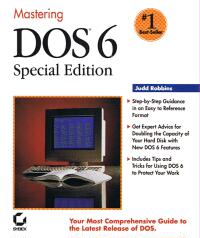 |
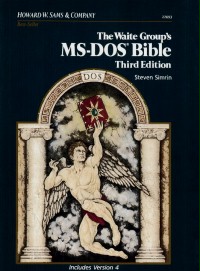 |
MS-DOS Bible 1989 by Steven Simrin ISBN: 0-67222-693-6 A third release of the 1985 book, this revised volume focuses on MS-DOS Version 4. It details the new DOS commands and functions, and includes an expanded batch file language, improved disk formatting, device drivers, file structure, and resident memory programming. This edition is available here for reading and download: MS-DOS Bible A fourth edition was published in 1991. Thanks to John Rendace of Eustis, Florida for suggesting this book and for providing a link to the cover scan. He says of the 1989 edition: "It offers a really good rundown of the DEBUG command, which I find useful when running MS-DOS legacy software in virtual machines, these days." |
|
MS-DOS Explained 2004 by Noel Kantaris and Philip Oliver ISBN: 1-74123-076-4 Here is a more recent book written for those wanting to get directly into DOS. As such, it skips computer set up details and goes right into DOS versions, and its structure and DOS commands. Directories & files and their management are followed by a chapter on EDIT. Configuration details, and system control and tools are discussed, then a complete command reference is given. |
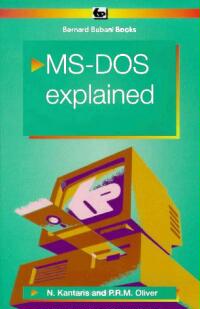 |
 |
MS-DOS Introduction, Applications, Tips & Tricks 1983? By Chris Lorenz ISBN: 0-91182-726-9 This is the oldest book on DOS listed here. Now mainly only suitable for hobbyists and those wanting to know about early PC and MS DOS, it covers up to Version 2.0. Being an early book, it has background information on DOS and Microsoft. Machine code, batch programming and AUTOEXEC.BAT commands are explained. |
|
MS-DOS Shell 1989 from NCR ISBN: ? This is an NCR manual that comes with their version of MS-DOS 4.01. Generally, manuals are not included here but it is because of its detailed description of DOS SHELL, a GUI interface for DOS. This 100+-page booklet explains everything about the shell: setting it up, adjusting preferences, program starting and grouping, file associations, display windows, and so on. This is a valuable reference to anyone using DOS SHELL. |
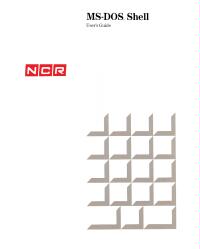 |
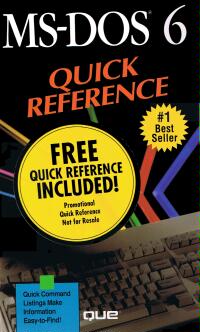 |
MS-DOS 6: Quick Reference 1993 by Sally Newman ISBN: 1-56529-137-9 A good reference for the occasional DOS user or for a beginner not yet comfortable with all the available commands. Each is laid out in a one or two-page alphabetical listing with additional specific categories such as "Batch File Commands" and "CONFIG.SYS Commands" for those particular commands. Further inclusions discuss multiconfigurations, DOS EDIT and MS-DOS messages. The compact format of this book allows the user to quickly locate the required information. |
|
MS-DOS 6: Quick Start 1993 by Various Authors ISBN: 1-56529-096-8 A Que book, it lays out this popular DOS version's workings in a detailed manner. Suitable for beginners, it starts with computer fundamentals, then moves on to the basics of DOS itself. Included are comprehensive details on each command, and also an Error Message reference. |
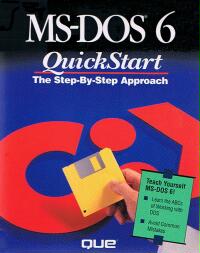 |
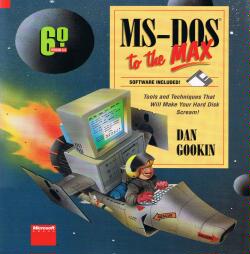 |
MS-DOS to the Max 1993 by Dan Gookin ISBN: 1-55615-548-4 Although I don't relish Dan's writing style, he certainly knows his DOS stuff. This book is good for all but the neophyte. It gives short instructionals on improving DOS performance through configuration files and hard disc management. Discusses the new features of DOS 6 such as DEFRAG, UNDELETE and UNFORMAT. An included disc provides CONFIG and AUTOEXEC wizard setup programs, as well as a additional utilities. |
|
MS-DOS User's Guide 1984 by Chris Devoney ISBN: 1-88022-061-9 An older book on DOS, it is included because it still contains useful information for the newbie. There are also things for the historian and hobbyist. It covers up to MS and PC DOS versions 2.0 and 2.1. By that time, many of today's familiar DOS commands had been included, although of course, they didn't have the sophistication of their 21st century versions. Still, I recommend this book if for no other reason than to give the reader a historical perspective. |
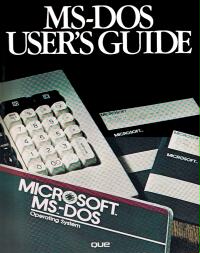 |
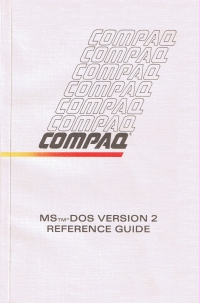 |
MS-DOS Version 2 Reference Guide 1984 by ? ISBN: ? (Third Edition) Another older book, it's mainly listed here for collectors, this guide came with COMPAQ computers of the era. Regardless, it is still a good beginner book for DOS newbies. For advanced users though, there are good chapters on DEBUG and MS-LINK. In addition, for those interested in EDLIN, a section devoted to it is here too. |
|
Murphy's Laws of DOS 1993 by Charlie Russel ISBN: 1-7821-1280-3 A humourous look at the fundamentals of DOS. Although some of it is not as funny as the author intended, this is a good beginner book. It explains some of the things not found in some "beginner" books that too-often assume the reader knows a bit about computers and operating systems. It includes error messages and a chapter of "don'ts" with easy explanations. The book devotes some time to discussing popular programs and also to the commands you will use most often. A glossary rounds out this book. |

|

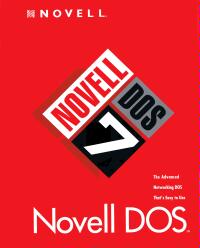 |
Novell DOS 7 1993 from Novell ISBN: ? Novell DOS was the successor to DR-DOS (Dee-are-Doss), which has since reverted back to the "DR DOS" name. This is the manual that came with this operating system, and as such, provides good detail on all aspects of an excellent DOS version. New features included Networking, DPMI (DOS Protected Mode Interface), Multitasking, and enhanced security. The manual explains all but goes into greater detail on setting up and managing a network, and on using the network services that come with Novell DOS. |

 |
Peter Norton's DOS Guide 1987 by Peter Norton ISBN: 0-13-662073-6 (Revised Edition) A book from the master himself, this concentrates on beginner and Intermediate levels. However, Peter being a programmer, it gives more information on how DOS and computers interact with one another. After the fundamentals, it discusses resident programs and the customisation of DOS to suit the user's needs and style. Next are two chapters on avoiding pitfalls and mistakes, then two on more technical aspects. A detailed glossary and a quick command reference finish up this publication. |
|
Power DOS! 1993 by Alfred Glossbrenner ISBN: 0-679-73924-6 A well-written, in-depth book about DOS. This has something for any DOS user regardless of skill level. It also includes computer basics, with many tips for better operation and suggestions for saving money. Many software add-ons are discussed in depth and how they can be incorporated into the DOS user's toolbox. A must-have book for your DOS library. |
 |
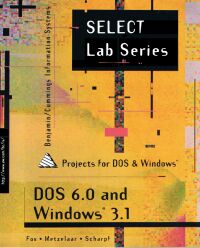
|
Projects for DOS 6.0 and Windows 3.1 1994 by Marianne Fox, Lawrence Metzelaar and Carl Scharpf ISBN: 0-8053-1163-7 A formal tutorial text designed for classroom usage, this book is a good one for beginners. About 55% of it is devoted to DOS, and this includes all the basics along with exercises, discussion topics and multiple-choice / fill-in-the-blanks questions at the end of each chapter. A detriment is that no "Answers" section is included within this text. |

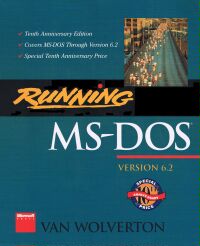 |
Running MS-DOS Version 6.2 1994 by Van Wolverton ISBN: 1-55615-633-2 A highly recommended starter book, Van writes in an easy, non-intimidating style that explains things simply for the newbie. It includes a good section on DOS commands. This 1994 updated printing is the Tenth Anniversary Edition. It continues the long series Van started with the publishing of the first edition in 1984. A 20th Anniversary Edition, published in 2002 by Microsoft Press, is available. The ISBN is: 9-78073-5618-121. Given that 2002 is the 18th anniversary, the issuing of this book two years early seems to fit Microsoft's characteristic pattern of premature releases. (-: |

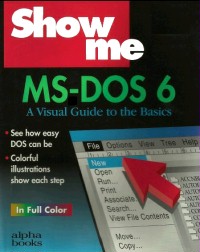 |
Show Me MS-DOS 6 1993 by ? ISBN: 1-56761-237-7 A book for novices, it spends most of its time with the DOS Shell, but goes on to discuss basic command-line techniques, and then MS-DOS 6 utilities such as MemMaker, DoubleSpace, AntiVirus, and extensively: Backup/Restore. It ends with a short error message reference and a glossary. While not in depth, nor discussing all features of the above or other aspects of DOS, it at least gives a newbie a start using a visual guide and lots of illustrations. |
|
Staying with DOS 1990 by Dan Gookin ISBN: 0-940087-48-0 An older book that does not quite fit in the 21st century, nevertheless, it is listed here because many of the reasons are still sound. If anything, because of advances in DOS, some aspects of Dan's points may be even more relevant today. He compares DOS to other operating systems, all from that era. He discusses the advances made to DOS at that time and why they made DOS still viable even considering OS/2 and Windows. He also gives comparisons to Unix. Then he goes on to the progressions that were on the horizon - ones DOS users came to have in the decade to follow. Sections with check lists and decision charts help the user to decide what is best for his needs. The book is a wealth of tips for users that wish to boost DOS power and performance. Even though today's DOS users may have implemented most, or even all, of what he suggests, the book is an excellent reference for explanations of those points. |
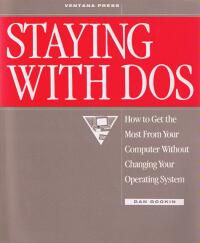 |

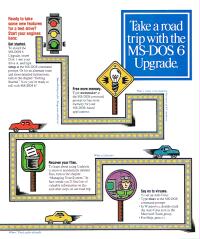 |
Take a Road Trip with the MS-DOS 6 Upgrade 1993 from Microsoft ISBN: ? A manual from Microsoft, it is being included here because it deals specifically with upgrading from previous DOS versions, or from OS/2, to MS-DOS Version 6. It contains the obligatory basics of DOS, but also discusses laptop-specific features and commands such as POWER and INTERLNK. There are also chapters on freeing hard disc space, system configuration, problem diagnosis and solving, and on international usage. A bonus is a chapter devoted to accessibility for the handicapped. This is something rarely found in any other DOS publications, hence another reason for this book's inclusion here. |
|
Tandy: Advanced Applications 1989 by David Lien ISBN: 1-55828-021-9 (Third Edition) A popular book for Tandy DOS users of the 1000 series and model 1200, this is its third edition. It is a two-volume set that comprises the initial setup and usage of DOS, then moves on to advanced skills such as batch files, filters, directory structure, print spooling, the environment, backup strategies and much more. Some programming is touched upon with discussions of DEBUG and Assembly. |
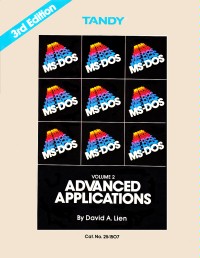 |
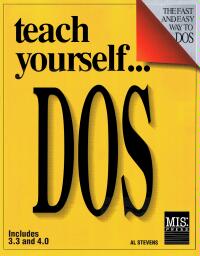 |
Teach Yourself DOS 1989 by Al Stevens ISBN: 1-55828-021-9 This is a new-user publication that covers computer and DOS basics. It explains the DOS edit keys and each DOS command then goes on to explain redirection and filters. There is a chapter on batch files and one on after-market utilities, and a good section set up in an "I want to..." format. A command summary and glossary finish up this helpful book. |
|
Teach Yourself DOS 1990 by Herbert Schildt ISBN: 0-07-881630-0 This is not a newer edition of the book above. It is written by a different author but is in a similar in vein. Aimed at beginners, it covers computer basics, and the initial installation and setting up of DOS. It then goes on to discuss DOS commands and configurations, batch files, the DOS SHELL GUI, and system management. An entire chapter is devoted to EDLIN, the line editor that came with DOS until it was replaced with EDIT. Exercises throughout test one's ability to understand what is being taught. |
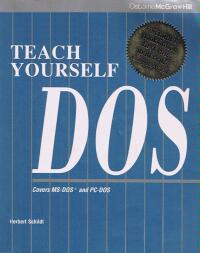 |

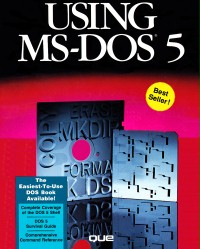 |
Using MS-DOS 5 1991 by ? ISBN: 0-88022-668-4 Suitable for beginners and intermediate users, this Que book starts with rudimentary DOS knowledge and skill teaching, then advances to cover editing files, DOSKEY, macros, backup strategies, and the DOS Shell among other topics. A complete command reference is given plus DOS messages and function key usages. Also shown are the changes made to MS-DOS from Version 2 through 5. |
|
Using MS-DOS 6.2: Special Edition 1993 by Allen Watt Sr., Ed Tiley, Jon Paisley ISBN: 1-56529-646-X Another well-written Que book. This is an excellent reference for probably the most popular and revered version of Microsoft's DOS. Its still-wide usage today makes this an indispensable reference that should be in every DOS user's library. The book is well laid out and includes details on every aspect of DOS save DEBUG and LINK, which are for advanced users that want to program beyond batch. |
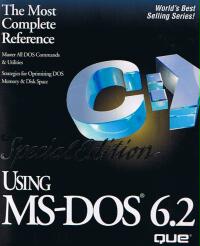 |
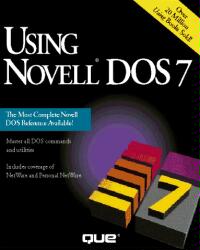 |
Using Novell DOS 7 1993 by Robert King, Eric Harper and Thomas Langley ISBN: 1-56529-104-2 Novel DOS was the successor to DR-DOS (Dee-are-Doss), which has since reverted back to the "DR DOS" name. Many new features were added for Novell's release which are covered in this book. (No further details.) |
|
Using PC-DOS 1986 by Chris Devoney ISBN: 0-88022-170-4 Intended for beginner and intermediate users, Chris explains the basics then moves on to the details of file and directory naming and manipulation. Sections on customising DOS and two on batch files give the user an understanding of how to automate his system to have it under his complete control. A chapter also discusses international settings for language and keyboard layouts |
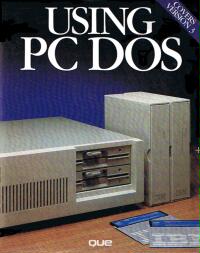 |
A special thankyou to Colin Conrad and Babs Walker of
Dartmouth, Nova Scotia, and to Trina Conrad of
Toronto, Ontario for book cover scanning work.
Thanks to Richard Bonner of Dartmouth, Nova Scotia
for digital "repairs" to the covers.
Be sure to check
DOS Websites
for links to some of the programs
mentioned in this publications reference.
|
Return to the Books Table of Contents |
Return to the Publications Table of Contents |

|
|